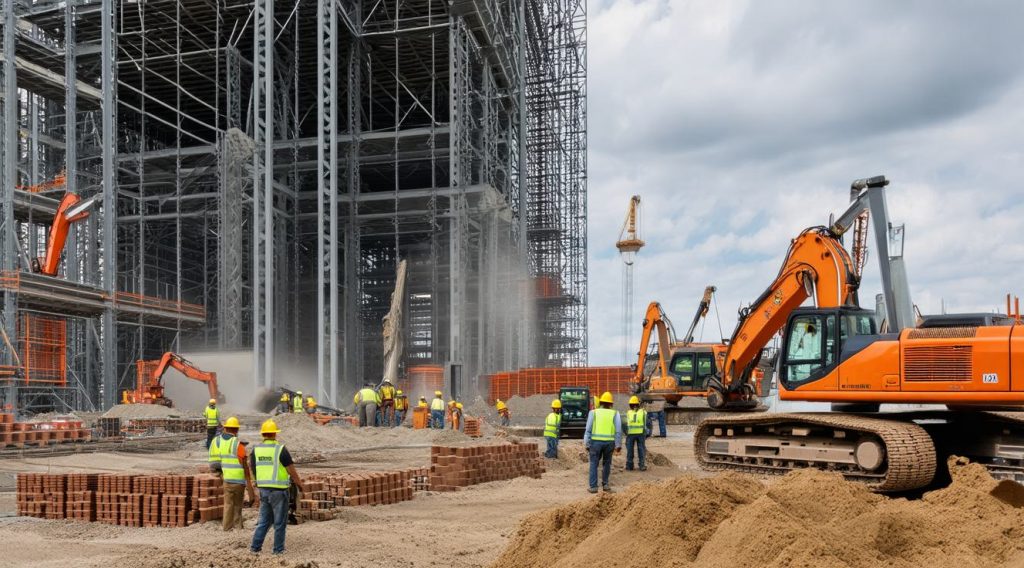
Safety Measures in Construction: Protecting Workers and Sites
Construction sites are inherently hazardous environments, with a high potential for accidents if proper precautions aren’t taken. Implementing safety measures is crucial for protecting workers and ensuring efficient project completion. This guide covers key strategies, equipment, and regulations to enhance safety on construction sites.
Construction Site Safety Measures
The foundation of a safe construction site is a well-defined safety plan. This includes conducting regular risk assessments, ensuring proper signage, and providing clear guidelines for all workers. Safety measures should be tailored to the specific site and include protocols for hazardous tasks, such as operating heavy machinery or handling toxic materials.
Tips for Construction Site Safety
- Training and Awareness
Train all workers on site-specific hazards and safety procedures. Conduct regular safety briefings to address ongoing risks and updates to safety policies. - Clear Communication
Use walkie-talkies, signage, and visual aids to ensure that workers and site managers can easily communicate potential hazards.
Reducing Construction Accidents
Accidents can often be prevented with proactive planning. Use proper scheduling to avoid fatigue among workers, and rotate shifts for tasks involving heavy lifting or repetitive motions. Perform daily inspections to identify and mitigate potential risks before work begins.
Safety Equipment in Construction
Personal protective equipment (PPE) is essential for worker safety. Helmets, gloves, safety goggles, and high-visibility vests are mandatory for most construction tasks. Specialized equipment, such as harnesses for working at heights or steel-toe boots for heavy lifting, further enhances safety. Ensure all PPE meets industry standards.
OSHA Regulations for Construction
The Occupational Safety and Health Administration (OSHA) provides guidelines to ensure safe working conditions on construction sites. These include requirements for fall protection, scaffolding, electrical safety, and trenching. Adhering to OSHA regulations minimizes legal risks and protects workers from harm.
Workplace Safety Tips for Builders
Builders should follow these safety tips:
- Inspect Tools and Machinery: Regularly check equipment for wear and tear to avoid malfunctions.
- Maintain Clean Work Areas: Remove debris and unnecessary materials to prevent trips and falls.
- Use Proper Lifting Techniques: Train workers on safe lifting methods to prevent back injuries.

Protecting Workers On-Site
Supervisors play a vital role in ensuring worker safety. Assign safety officers to oversee high-risk activities, and encourage workers to report unsafe conditions immediately. Providing access to first aid kits and trained medical personnel is also crucial for responding to emergencies.
Common Construction Site Hazards
Hazards such as falling objects, slips, electrical shocks, and machinery-related injuries are common on construction sites. Mitigate these risks by using barricades, securing tools, and marking hazardous zones. Proper drainage systems also help prevent accidents caused by wet or muddy surfaces.
Fall Prevention in Construction
Falls are one of the leading causes of construction-related injuries. Use guardrails, safety nets, and personal fall arrest systems for workers at heights. Ensure scaffolding is stable and constructed according to guidelines. Inspect ladders for damage and secure them properly before use.
Construction Site First Aid Guidelines
First aid preparedness is a critical aspect of construction site safety. Stock first aid kits with supplies like bandages, antiseptics, and splints. Train workers in basic first aid techniques, including CPR and how to treat common injuries like cuts, burns, and sprains. Display emergency contact numbers prominently on-site.
Conclusion
Implementing robust safety measures in construction protects workers and minimizes project delays caused by accidents. By following OSHA regulations, providing proper training, and ensuring the availability of safety equipment, construction sites can become safer and more efficient. Proactive management and continuous monitoring are key to maintaining a safe working environment for all.